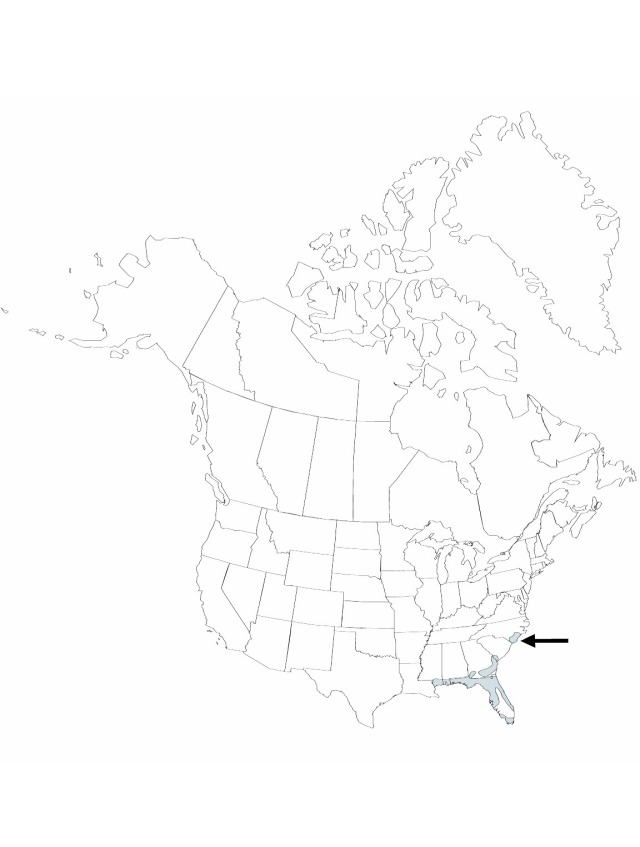Herbs, annual, cespitose, rarely solitary, 7–30 cm. Stems short. Leaves in fans, (1–)2–3(–10) cm; sheath base without chestnut brown patch; blade strongly maroon-tinged, lance-linear, 1–3(–4) mm wide, margins papillate or finely tuberculate-scabrous. Inflorescences: scape sheaths much exceeding leaves; scapes filiform, nearly terete, 0.5 mm wide, many ribbed; spikes mostly ovoid, mostly longer than broad, 4–8(–10) mm, apex acute; fertile bracts 3–5 mm, margins entire or erose, apex keeled. Flowers: lateral sepals included, strongly curved, 2–3 mm, keel concolorous, firm, ciliate; petals unfolding in morning, blade obovate, 2.5–3 mm; staminodes bearded. Seeds translucent, broadly ellipsoid to round, 0.3 mm, finely lined longitudinally. 2n = 18.
Phenology: Flowering spring–early summer (all year south).
Habitat: Acid, sandy, peaty flatwoods, clearings, disturbed moist sands, coastal plain
Elevation: 0–200 m
Distribution

Ala., Fla., Ga., Miss., N.C., S.C.
Discussion
Selected References
None.